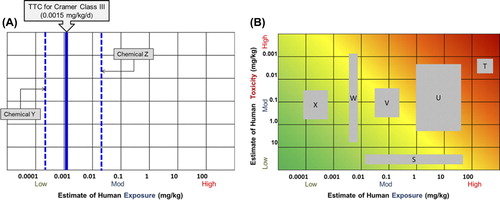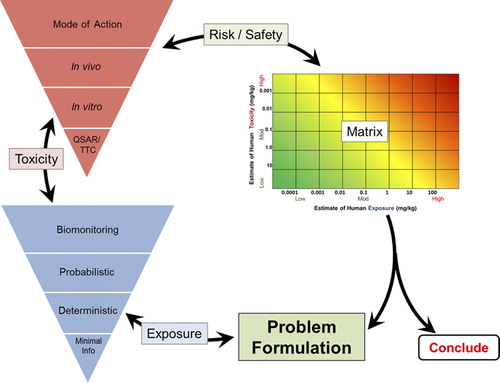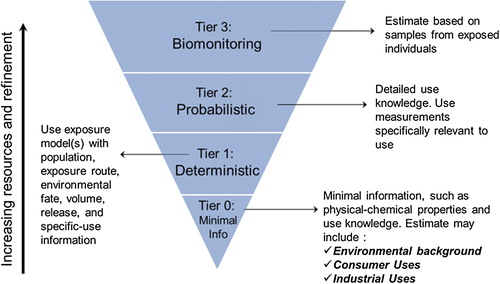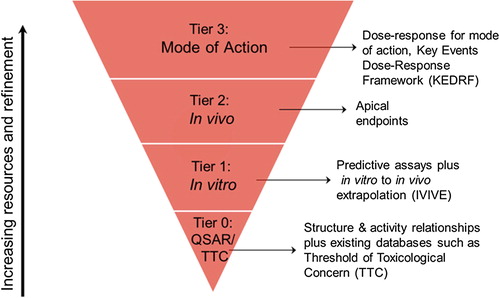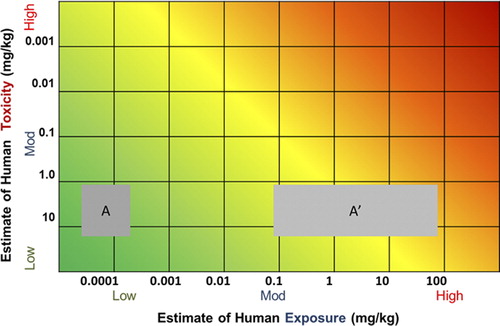Figures & data
Figure 1. Graphical representation of the differences between precision and accuracy. Figure created by Pekaje, based on PNG version by Anthony Cutler, using en:xfig, en:inkscape, and en:HTML Tidy. Available at: www.en.wikipedia.org/wiki/File:Accuracy_and_precision.svg.
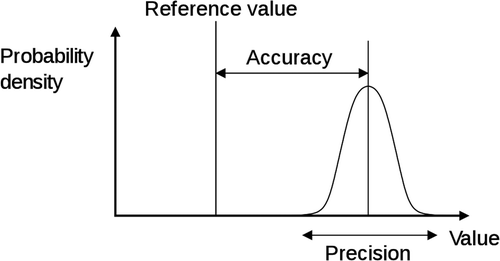
Table 1. Visual depictions of exposure and toxicity information using the RISK21 matrix.
Figure 5. Exposure-toxicity intersection formed from two ranges. (A) Illustrates a scenario where there is a wide range of toxicity values, but a fairly narrow range of exposure estimates. (B) Illustrates a scenario where there is a wide range of exposure values but a fairly narrow range of toxicity estimates.
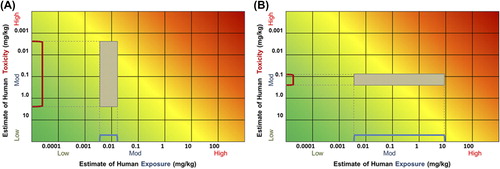
Figure 6. Exposure-toxicity intersection formed from a mean with a range for exposure and a point value for toxicity to which a 100 ×adjustment factor has been applied.
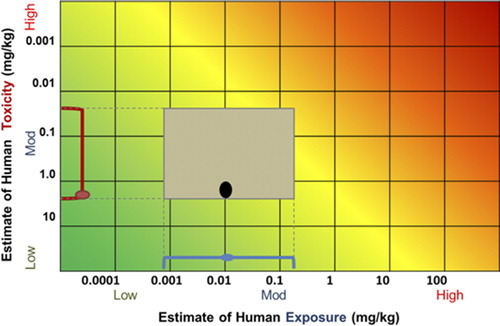
Figure 7. Exposure-toxicity intersection formed from mixing two probability distributions showing isoprob contours.
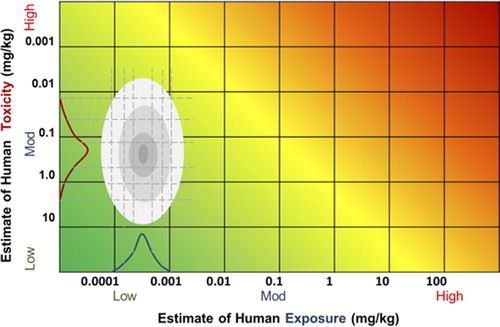
Figure 8. Illustrative examples of the RISK21 visualization matrix used for priority setting. (A) Adaptation of the matrix to apply the Threshold of Toxicological Concern (TTC) as a low-tier prioritization and screening approach, using only chemical structure and exposure information; (B) Illustrative example of how the RISK21 matrix could be used for six chemicals for which both exposure and toxicity information is available.
